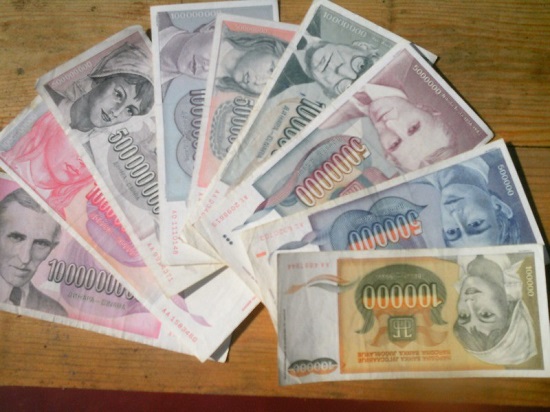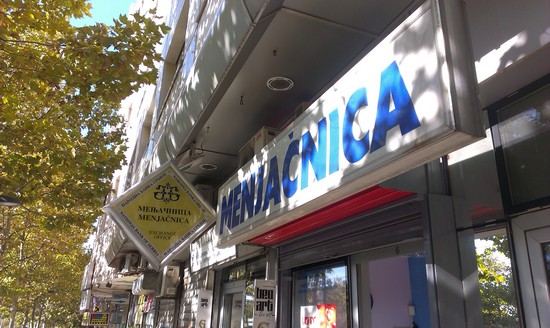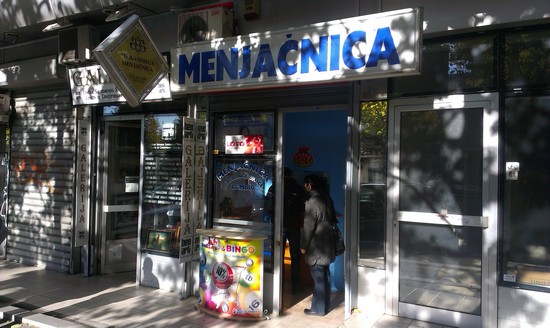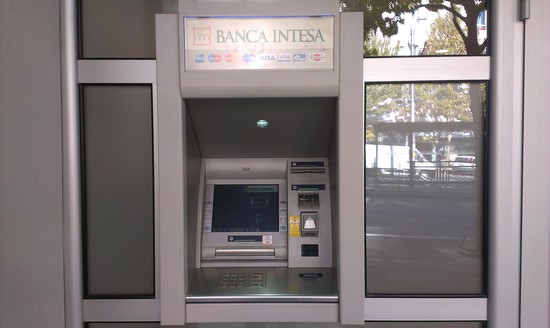Exchanging currencies when travelling can be tricky, especially if you travel to the part of the world where they are using currency for which you have never heard before. It gets even more confusing when all the prices in the country are expressed in Euros, everybody are mentioning Euros when talking about prices, but you can’t pay almost anywhere using European currency. How weird is that? You would probably think, they don’t use domestic currency to express prices because of the high inflation rate, but you would be wrong again, yearly inflation is almost at the level of EU countries… So, what is the name of this unusual country, where it is and why they make it so difficult for tourists to understand prices?
You have probably guessed by now, I’m talking about Serbia! I’ll do my best to explain why we made it to seem so complicated and hopefully after my explanation, you’ll see it’s in fact very easy.
Hyper inflation in 1993
If you were interested in traveling to Serbia you already know that our official currency is Serbian Dinar, or shorten RSD. But you won’t hear average Serbian to showcase value of something in Dinars, no matter if it’s his salary, price of a real-estate or even a mobile phone he is using. We might have Dinars in our bank accounts and wallets, but Euro is what we actually have in mind.

Why is that, you would ask? Not that long, some 20 years ago, our economy was stricken by very severe hyper-inflation, where it was very important that on daily basis you would exchange your Dinars to Deutche Marks (DM), or your money would lose all the value. During that period we were all billionaires, we had banknotes with so many zeros on it, that your head would spin, but in fact money had no value. If you would receive a salary in the morning in Dinars, which would be 100 DM worth, by the evening the same amount in dinars would be 10DM, so if you haven’t exchanged your Dinars into hard currency quick, you would face significant losses. That hyper-inflation lasted for almost all 1993 and it was stopped in 1994, so after 1.1.1994 the rate was fixed at 1 Dinar for 1DM. Of course, that fixed rate didn’t last too long, but we never faced hyper-inflation after that, only good old standard inflation, so today’s rate if measured in DM would be around 61 Dinars for 1DM, which means that our currency devaluated 6100% to DM in last 21 years. Not bad! It used to more in a month back in ’93.
Even after that period we had periodical turbulence with local currency, and having all that in mind it’s no wonder why we prefer to think in hard currency (Euros nowadays), even though situation with Dinar is pretty stable lately. This contributed to a habit of saving in Euros, so we exchange a lot and often. Certainly this habit developed the need of having exchange offices at almost every corner all-round the country.
Exchange offices and banks at every corner

Benefit for travellers and tourists is that they can exchange their foreign currency easy, safe and at a good rate. All exchange offices are licensed by National Bank of Serbia and there is no exchange office without this license, which in practice means that owners must obey NBS policy in every aspect or they are facing losing the license and getting out of the business. Personally, since this system was introduced some 10 years ago, I have never heard of any case of fraud, hustle or any other problem. In Belgrade rate is less favourable in those exchange offices where is a bigger circulation of people, like shopping malls, airport, main pedestrian areas of city centre, but the difference is not that big, it can defer to those most favorable for 1%, unless you are exchanging great amounts, it won’t make big difference. Of course, you can also exchange your currency at every bank, and God knows we have plenty of them, but they will offer even lesser favorable rate (maybe 2% under the rate of exchange offices).

And probably the most important thing related to payments in Serbia is that you really don’t need to carry large amounts of cash around, because at almost every place (hotels, restaurants, cafes, petrol stations…) you can pay with your credit card and there are plenty of ATMs everywhere which will give you Dinars at official rate.

Bottom line is that you can really be relaxed when it comes to money related issues in Serbia, we did our best to accept your money in comfortable, safe and easy way.


2 comments
November 17, 2015
November 29, 2015